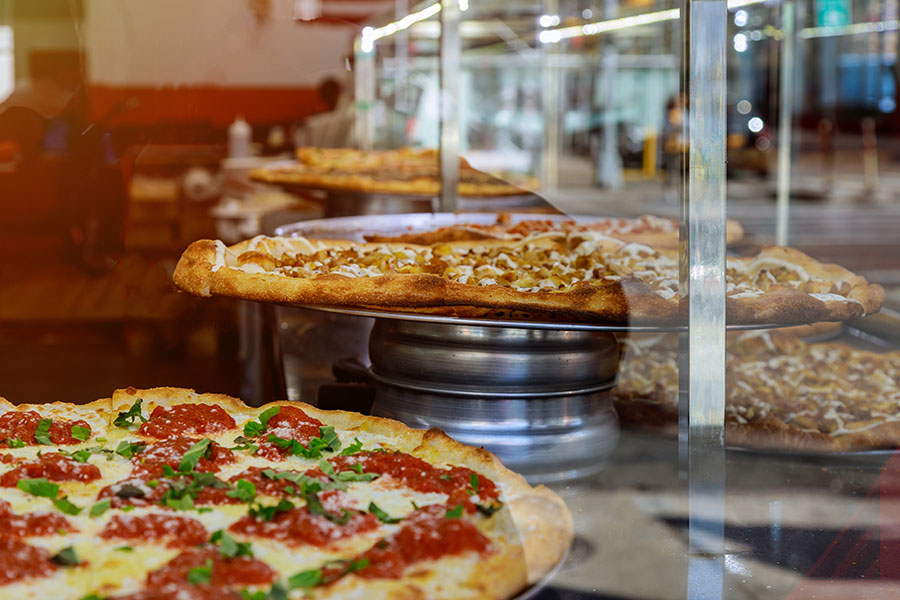(Editor’s note: This article is based on a Pizza Expo 2025 session by Scott Wiener, founder of Scott’s Pizza Tours in New York City.)
Staying up-to-date with the latest trends is essential to for pizza operators to remain competitive. This year, a variety of pizza styles that are capturing the attention of both operators and customers alike.
“Fifty-five percent of pizzerias are interested in adding an additional style to their menus,” Scott’s Pizza Tours founder Scott Wiener tells the audience during an educational session at Pizza Expo 2025. Wiener’s cites the 2025 Pizza Industry Trends Report, which reflects the growing trend among pizzeria operators to diversify their offerings.
And while differentiation is a positive for any business, Wiener points out that multiplicity is what distinguishes a truly regional pizza style. “When one pizzeria declares that it is doing something so unique that it is a brand-new regional style, I would say, ‘Pump the brakes,’” Wiener says. “This is the kind of thing that makes most sense when it is defined by multiple restaurants doing the same thing.”
Pizza by the Slice
As evidence of this trend, Weiner points to the resurgence of “pizza by the slice.” The business model’s roots might be in New York, but slices are rapidly gaining popularity across the United States. “Pizza by the slice … it’s going all over the place,” Weiner says. This trend is driven in part by an increasing appreciation for pizza as a gourmet meal, rather than a quick bite. The evolution of slice shops – adopting modern and clean aesthetics akin to coffee shops – also is propelling this trend further. “They’re changing their look. … Now they’re kind of starting to look like coffee shops,” Weiner noted, pointing to the shift from the gritty, retro vibe of traditional slice shops.
Detroit-style Pizza
Another significant trend Weiner identifies is the rise of square pizzas – particularly Detroit style. He explains the unique features of Detroit style – such as its characteristic burnt cheese edge, or “frico,” which results from using a taller pan, where toppings extend all the way to the edge – are what set it apart as a style unto itself.
“The toppings can go all the way to the edge because they’re not using a shallow pan, they’re using a much thicker pan,” Weiner explains. He also links the style to Detroit’s industrial heritage. “Gus Guerra … was using the same type of pan to bake the pizza that they would use in the factory for storing hardware,” Weiner adds.
Yet Detroit style is gaining popularity with pizza fans far beyond Motor City. Learn how to make your own using tips from our Detroit-style pizza guide.
Tavern-style Pizza
Tavern-style pizza, known for its thin, crispy crust and square-cut slices, also is experiencing a surge in popularity. Weiner describes the style as “thin, crunchy, round pie cut into squares,” and noted its Midwestern origins. According to Wiener, Google Trends data supports that there’s increased consumer interest in tavern-style pies.
“We know that it’s a big push right now because we see big chains doing it. And when the big chains are doing it, then you know that it’s really at a buzzing level,” Wiener says. “It also is at the risk of not being so much a trend and being more of a fad.”
New Haven-style Pizza
Similarly, New Haven-style pizza is gaining momentum, celebrated for its distinct characteristics such as being “thinner, denser, crispier, crunchier,” according to Wiener. The rise of this style is partly fueled by the expansion of iconic New Haven pizzerias such as Frank Pepe’s and Sally’s, as well as a concerted effort by local advocates to promote Connecticut as a pizza destination.
Wiener also cites New Haven natives who are opening pizzerias specializing in the style in major food destinations such as Chicago, Los Angeles and London as playing a role in this style’s trending popularity. “Within the past two years, London has become obsessed with New Haven style. … That makes it a stronger case for regional style.”
Neapolitan-inspired Pizzas
Finally, Weiner says Neapolitan-inspired pizzas – or NEO-Neapolitan pizzas – blend traditional elements with modern innovations. He says the original elements of pizza “resonate” with today’s consumers by highlighting a broader movement toward customization and creativity in pizza making, allowing operators to experiment with unique ingredients and techniques while maintaining a connection to classic styles.
Weiner says today’s pizza landscape is in “interesting mode. … It’s the mode of pizzas that maybe have elements that resemble known styles.” Adapting to trending pizza styles can be a game-changer for pizzeria owners looking to offer pizza by the slice or diving into the traditional yet innovative world of Neapolitan-inspired pizzas. By investing in the dynamic nature of pizza, pizzerias can ensure they remain a beloved staple in the ever-competitive food industry.



